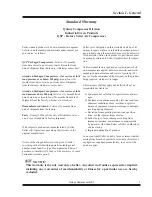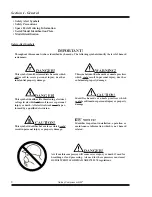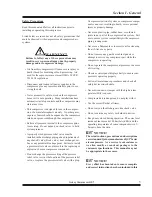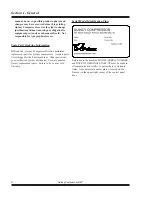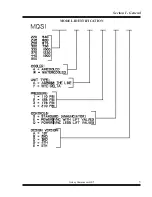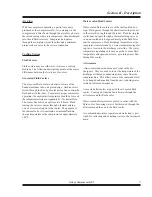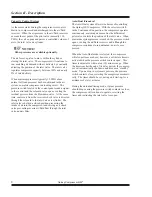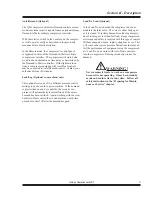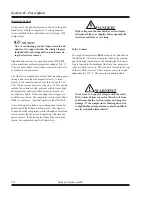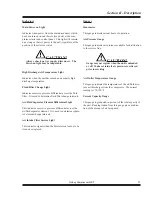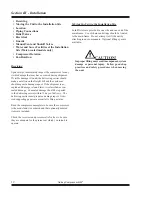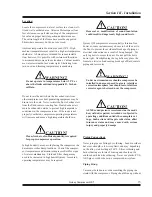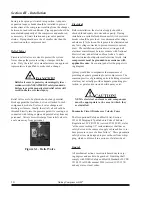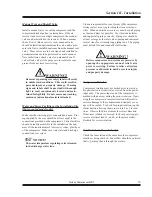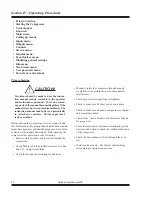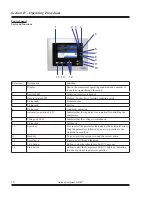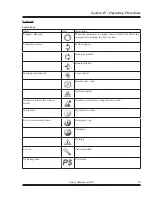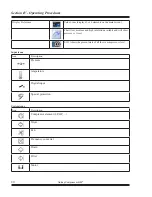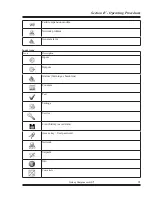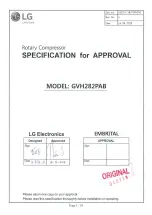
Section II - Description
6
Quincy Compressor-QSI
®
• General Description
• The Compression Cycle
• Air Flow
• Cooling System
• Capacity Control System
• Electrical System
• Indicators
• Gauges
General Description
QSI compressors are single stage, positive displacement,
fluid-flooded rotary screw type compressors containing
two precision-machined rotors. A motor directly drives
the male rotor through a flexible drop out type coupling
with no step up or step down gearing used. The male ro
-
tor has four lobes that mesh with a female rotor consisting
of six flutes. Both rotors are housed in a single cast iron
cylinder. The unit has an inlet port at the power input end
and a discharge port at the opposite end.
Most models are equipped with a positive displacement
fluid pump mounted to the compressor to circulate fluid
through the system. Models without a fluid pump use
positive pressure in the reservoir to circulate the fluid.
All components are attached to a heavy-duty steel frame.
Controls and indicators are arranged on a control panel.
Acoustical cabinets are available to reduce sound levels.
Figure 2-1. Compression Cycle
A) INTAKE
B) COMPRESSION
C) DISCHARGE
INLET PORT
CYLINDER
MALE
ROTOR
FEMALE ROTOR
DISCHARGE PORT
The Compression Cycle
The compression cycle of a rotary compressor is a
continuous process from intake to discharge with no
reciprocating mechanisms starting and stopping as found
in reciprocating compressors. The compressor consists
of two rotors in constant mesh, housed in a cylinder with
two parallel adjoining bores. The male drive rotor has
four lobes that mesh with six flutes in the female rotor.
All parts are machined to exacting tolerances.
As the rotors rotate, (male-clockwise as viewed from the
power input end) air is drawn into the cylinder through
the inlet port located at the power input end. A volume
of air is trapped as the rotor lobes pass the inlet cut off
points in the cylinders. Compression occurs as the male
rotor rolls into the female flute, progressively reducing
the space thereby raising the pressure. Compression
continues until the lobe and flute pass the discharge port.
The compressed air is then discharged into the air/fluid
reservoir. There are four complete compression cycles
for each complete rotation of the male rotor.
Summary of Contents for QSI Series
Page 2: ......
Page 7: ...Section I General Quincy Compressor QSI 5 MODEL IDENTIFICATION...
Page 62: ...Section IV Operating Procedures 60 Quincy Compressor QSI 1 Week Timer 2 Remaining Running Time...
Page 79: ...Section IV Operating Procedures Quincy Compressor QSI 77...



